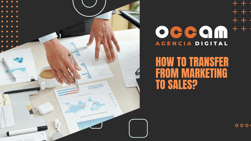Index Content
Inbound sales puts the customer ahead of the salesperson to improve business relationships
We often hear phrases like "the customer comes first", but do we really take this into account in practice? The truth is that not enough, and that is why one of the professions that customers trust the least is the sales process. This is due to a lack of adaptation to new sales trends and, above all, to a general reluctance to hand over control of the purchasing process to users. As a result of this problem, what is known as inbound sales has arisen.
it is a complementary methodology to inbound marketing that seeks to improve the potential customer's experience with the brand by offering them human, relevant and comprehensive help or advice, i.e. it aims to meet the needs of all the company's contacts equally, whether they are newcomers to your website or regular customers.
Inbound sales advocates that, at this moment in history, users are in control of sales because they have a lot of information on the Internet about a brand, a product, a service, etc. Therefore, a strategy based on the strict search for sales that neglects its relationship with the customer is destined to lose many benefits. To avoid this, in this article OCCAM presents the advantages of inbound sales and its four stages. Do you want to continue discovering details about this technique?
Advantages of inbound sales
Prioritising your customers not only benefits them, but also your company. Let's take a look at what inbound sales can offer your business:
- improve the relationship with your potential customers. An advice-based approach prevents users from feeling forced to make a purchase. As a company, you should present yourself as a possible solution, not the only one. This will make the relationship more positive and prevent your potential customers from ignoring your message directly.
- it conveys more trust than other more aggressive strategies. If users perceive that you really want to help them, they will trust you and your intentions more. Everyone likes to feel that you care about them, and that is precisely what inbound sales is all about.
- adapt your sales strategy to the digital era. As we have seen, the Internet and all the information it includes gives immense power to customers that you as a sales professional must also take advantage of. You can talk to users who interact with your company on social networks, research about them to know their context... You don't need to wait for them to contact you or tell you where they work because you can get ahead with digital tools. Otherwise, your competition will take advantage of this opportunity and you will lose a potential customer.
- offer a personalised experience to users. Inbound sales adapt each sales opportunity to the customer in question, as their aim is to offer personalised help. In this sense, the three stages of the buyer's journey are taken into account: recognition, consideration and decision. This methodology proposes accompanying and guiding users through all the stages, rather than waiting for them to buy the product directly.
The 4 stages of inbound sales
As we have seen, this methodology personalises relationships with customers according to their context, their needs and the stage of the buyer's journey they are in. But there is one more element to this equation: the stages of inbound sales. The first contact with a potential buyer has nothing to do with a call confirming the purchase. This is why it is necessary to adapt communications to each of the four stages:
-
identification stage
In the first stage of inbound sales, the goal is to identify potential buyers who are looking for solutions or opportunities that you can help them with. Therefore, you need to gather as much information as possible about your prospects in order to offer personalised attention that enhances their experience with your brand. To do this, it is useful to maintain a segmented database of your contacts. Remember that your first interaction with prospects will come when they have been in this stage for some time, so your goal is to be prepared for the moment of direct and personal communication.
Another of your functions in the identification stage is to attract potential customers by attracting their attention, as well as finding sales opportunities. In this sense, you should create useful content for your buyer personas, interact with them on social networks, research on blogs and LinkedIn groups of interest to learn about their concerns, etc. And, above all, strive to be part of that community so that they perceive you not only as an expert in the field, but also as a close and trustworthy professional.
-
connecting stage
The second stage consists of connecting with your potential buyers and guiding them in their objectives. This is your presentation to them. Here you must show that you know their situation and that you are capable of helping them to carry out a consultancy before offering them a demonstration of your product. Focus on showing yourself as a professional who wants to satisfy the needs of their customers. The aim is that they will want to follow your advice and see you as capable of accompanying them during the two remaining stages.
-
exploration stage
The purpose of the third stage is to understand the challenges of your potential buyers and explain their needs so that they can assess whether your services are the best option for them. Here you will develop a specialised consultancy process, demonstrating that you are an expert in the field and that your interaction with users will be beneficial to them. In this stage, you will be able to identify users who can become customers and those who cannot in order to focus your efforts on the former.
-
advice stage
The fourth and final stage of inbound sales seeks to advise your potential buyers so that they know which path to follow, showing them that your product or service is the solution that best suits their needs. To do this, create a personalised presentation according to the objectives of each user with product demonstrations, an ROI analysis, etc.
In short, inbound sales aim to improve your relationship with potential customers through a human, useful and personalised experience that goes beyond the information available on the Internet. Do you dare to try it?





